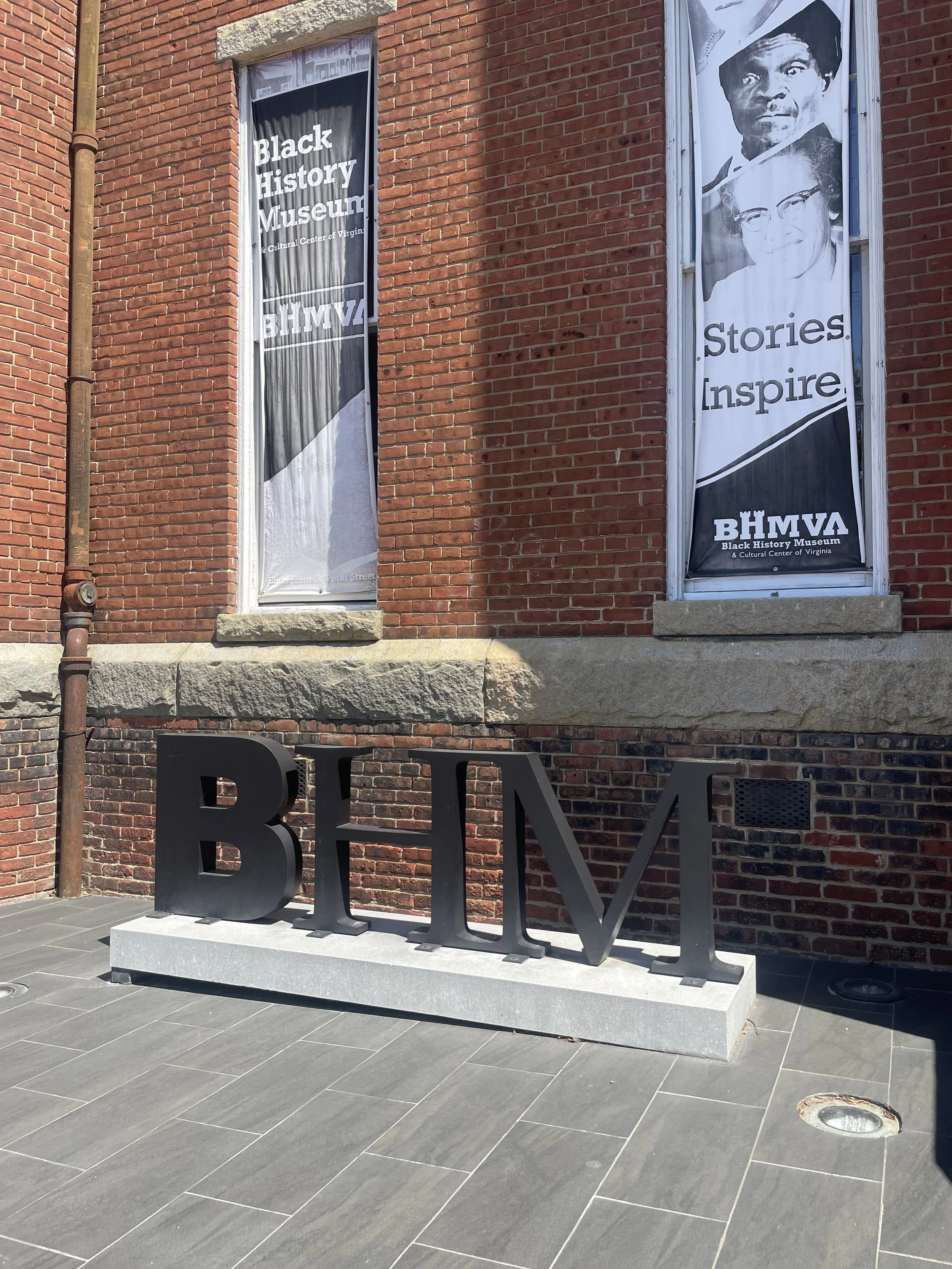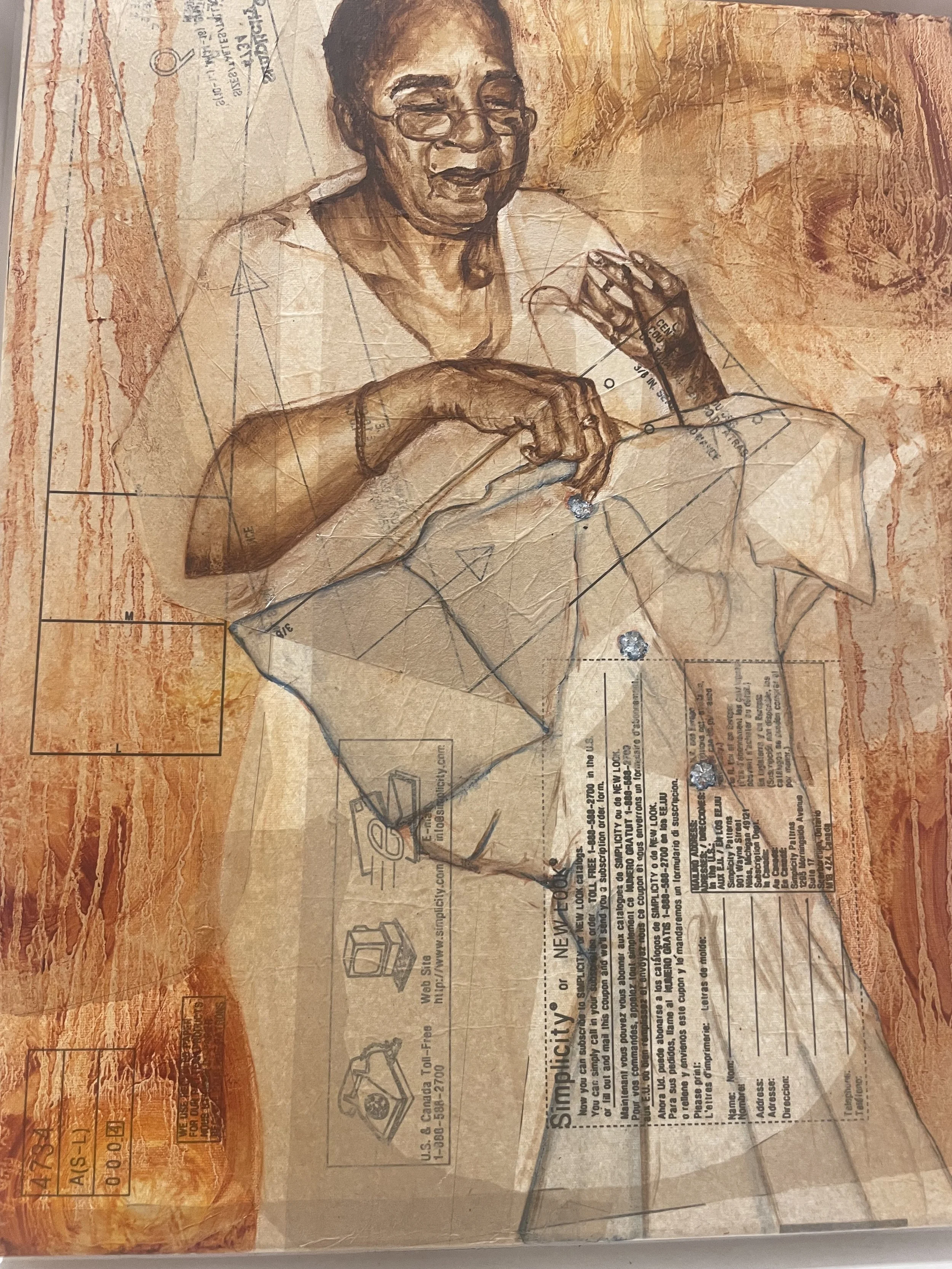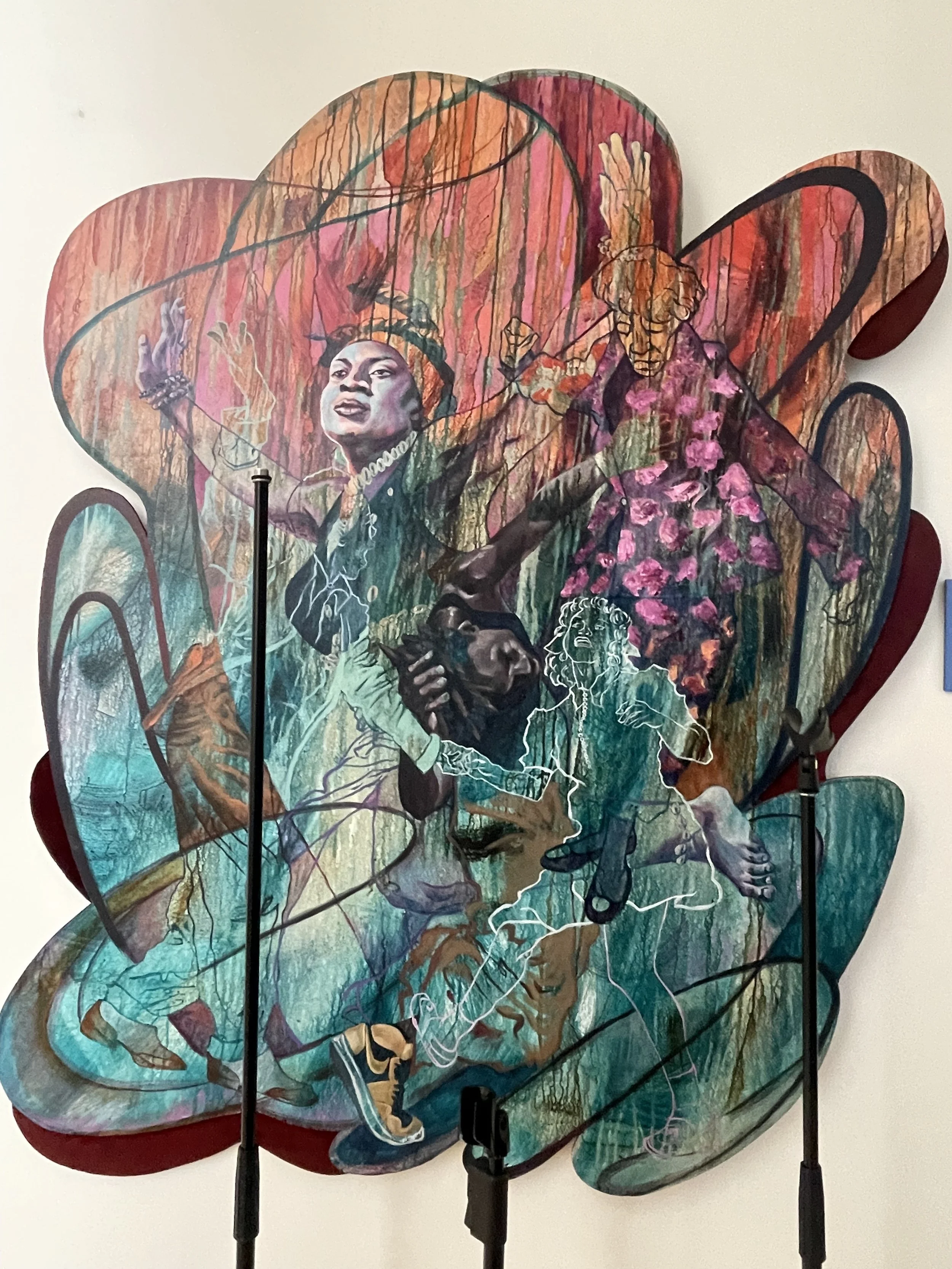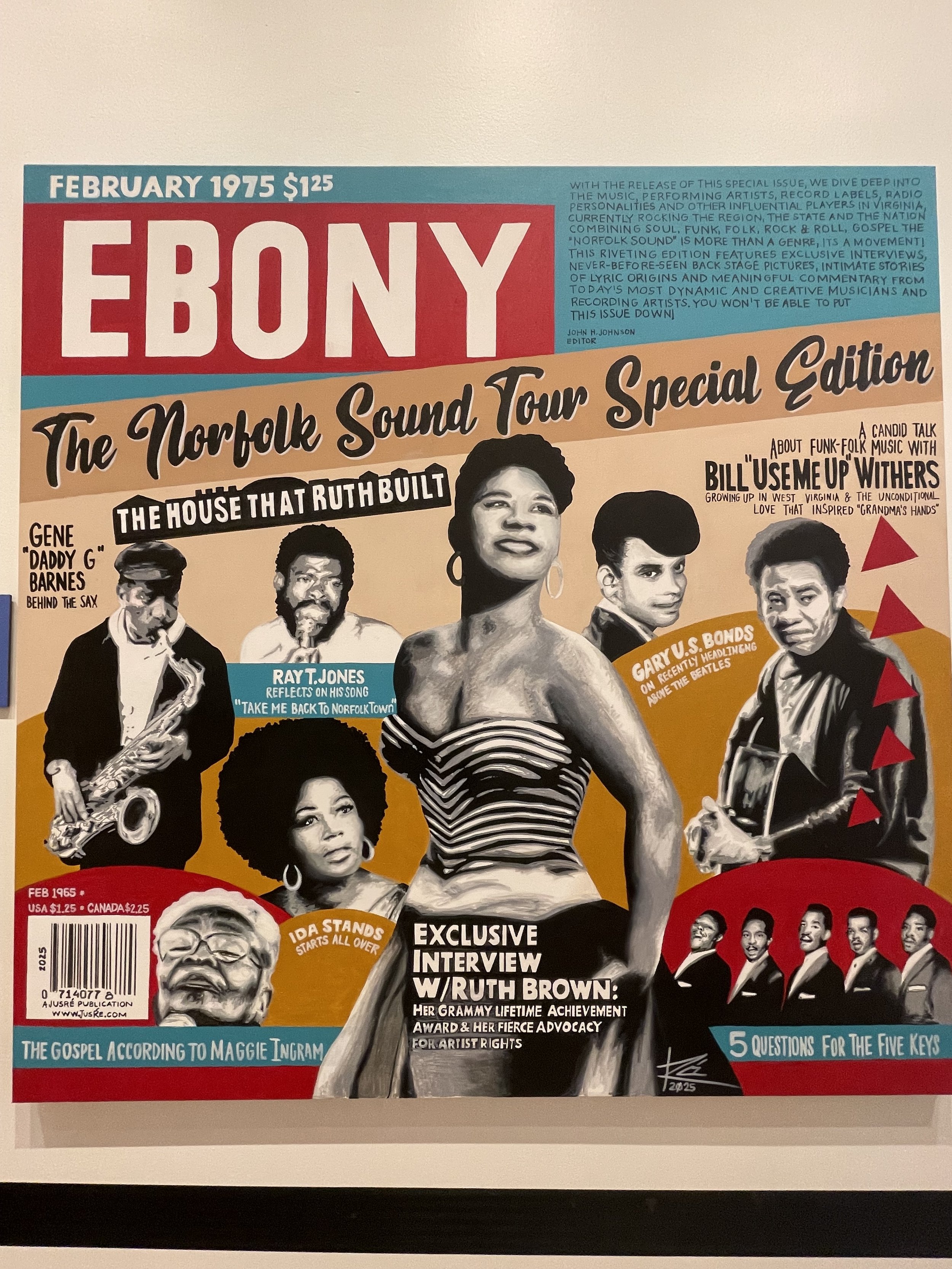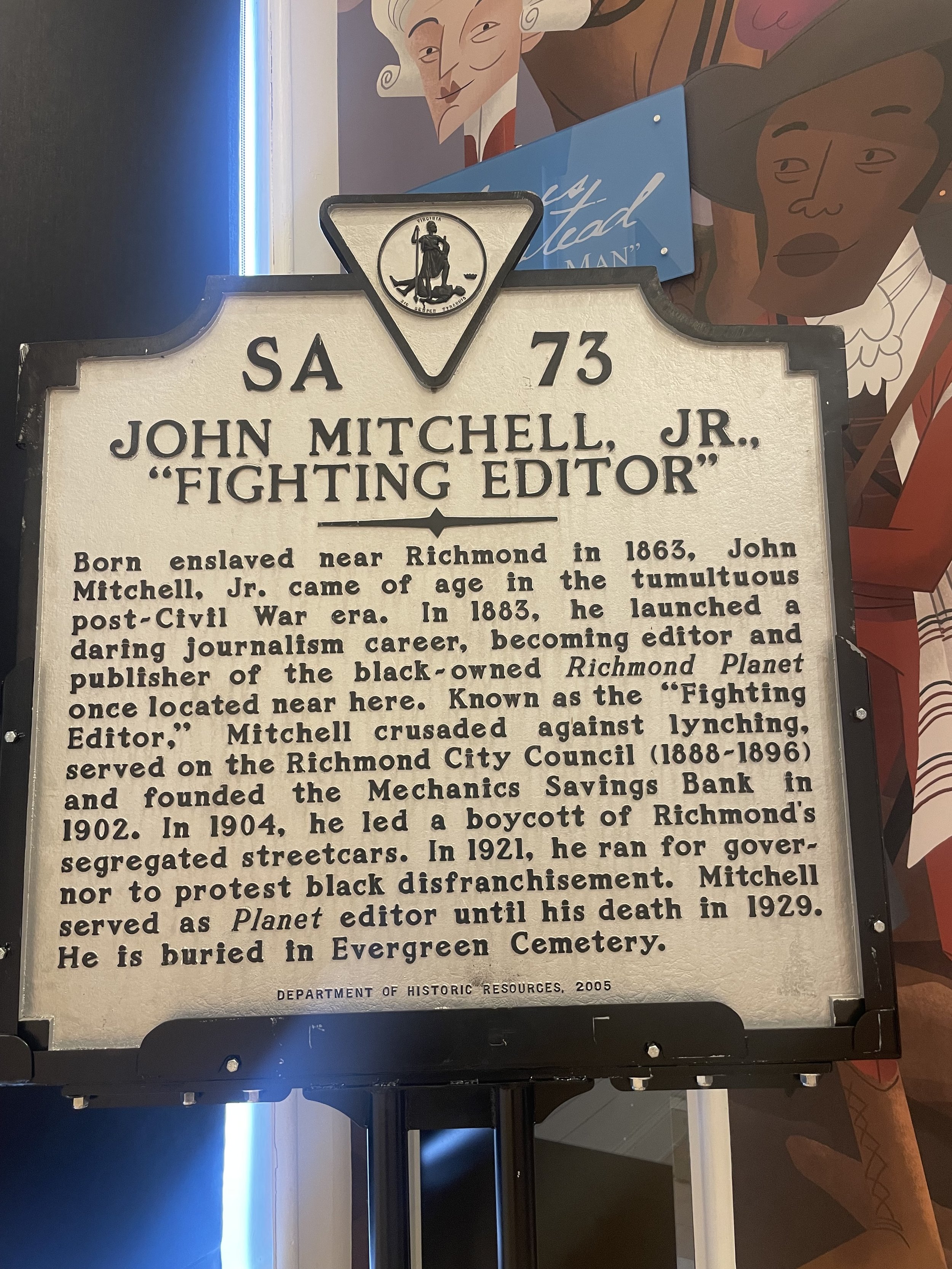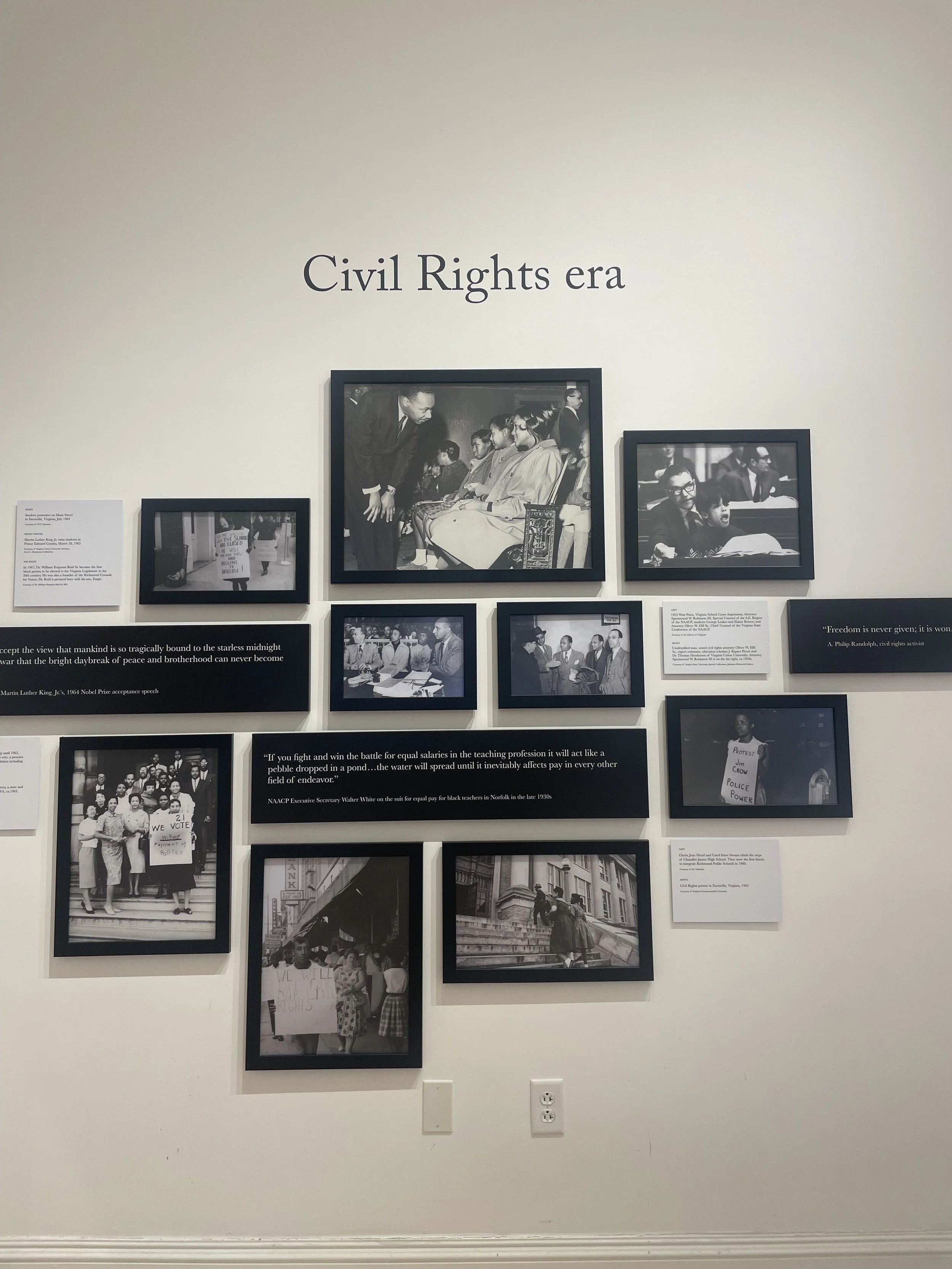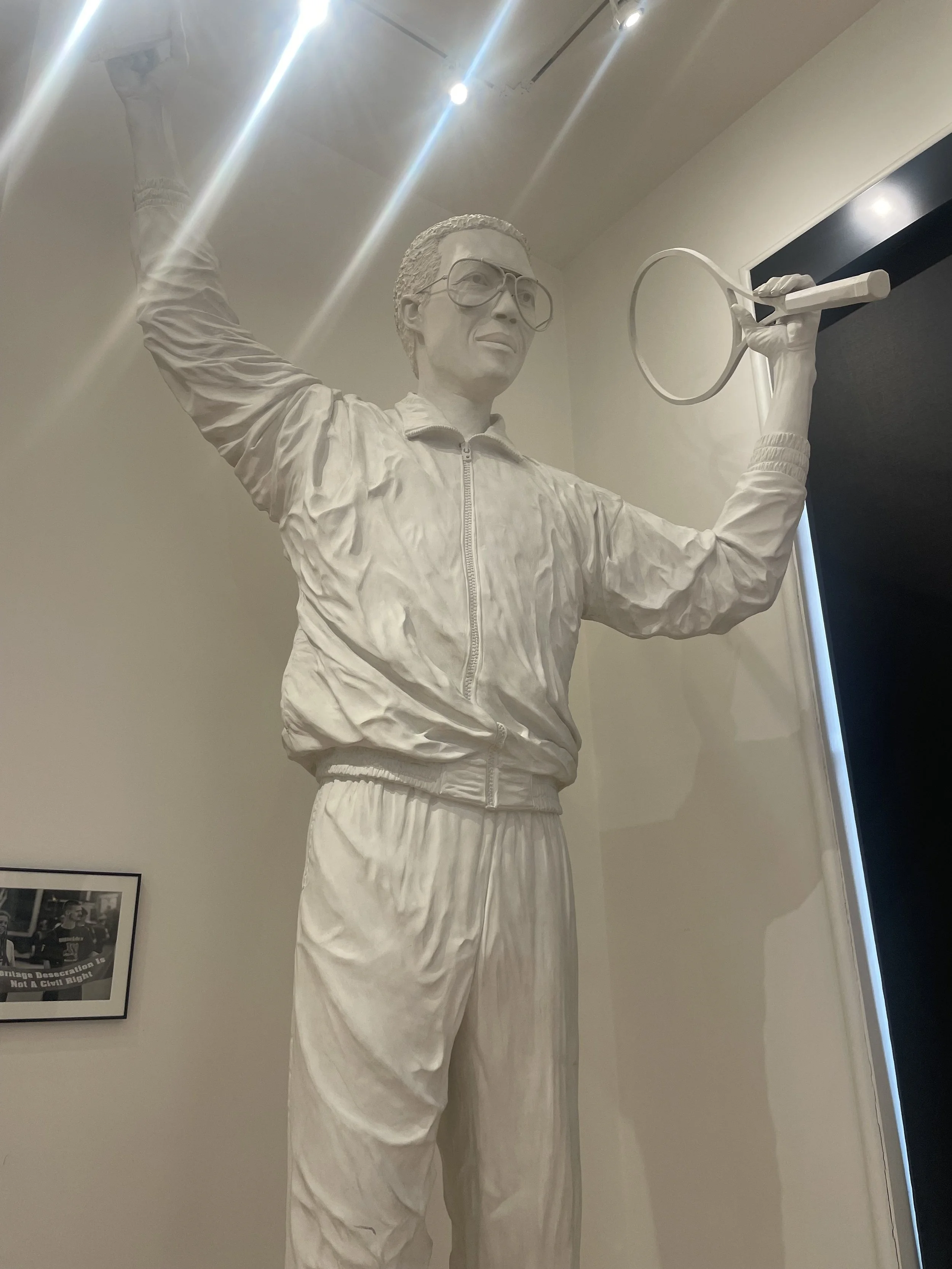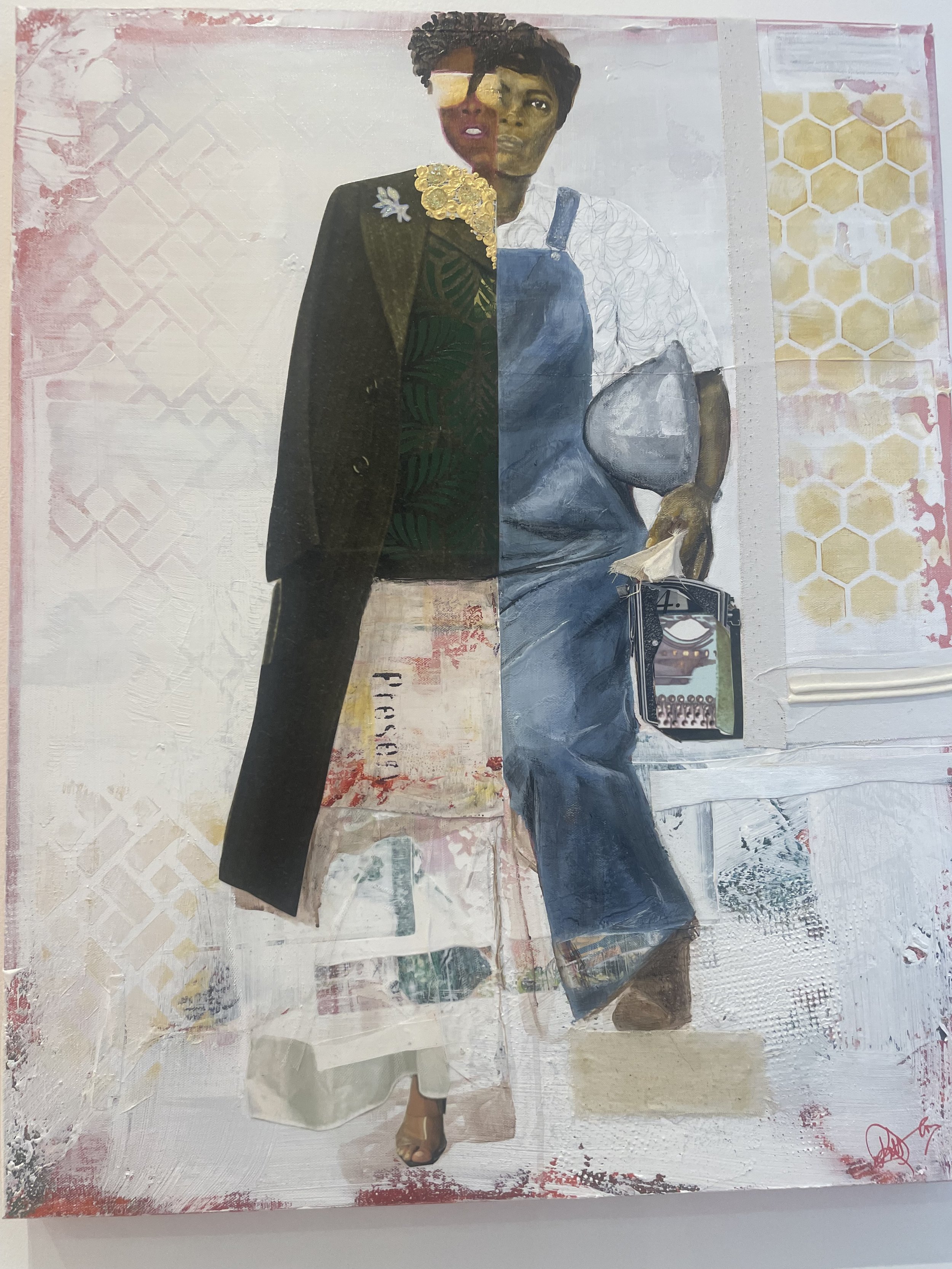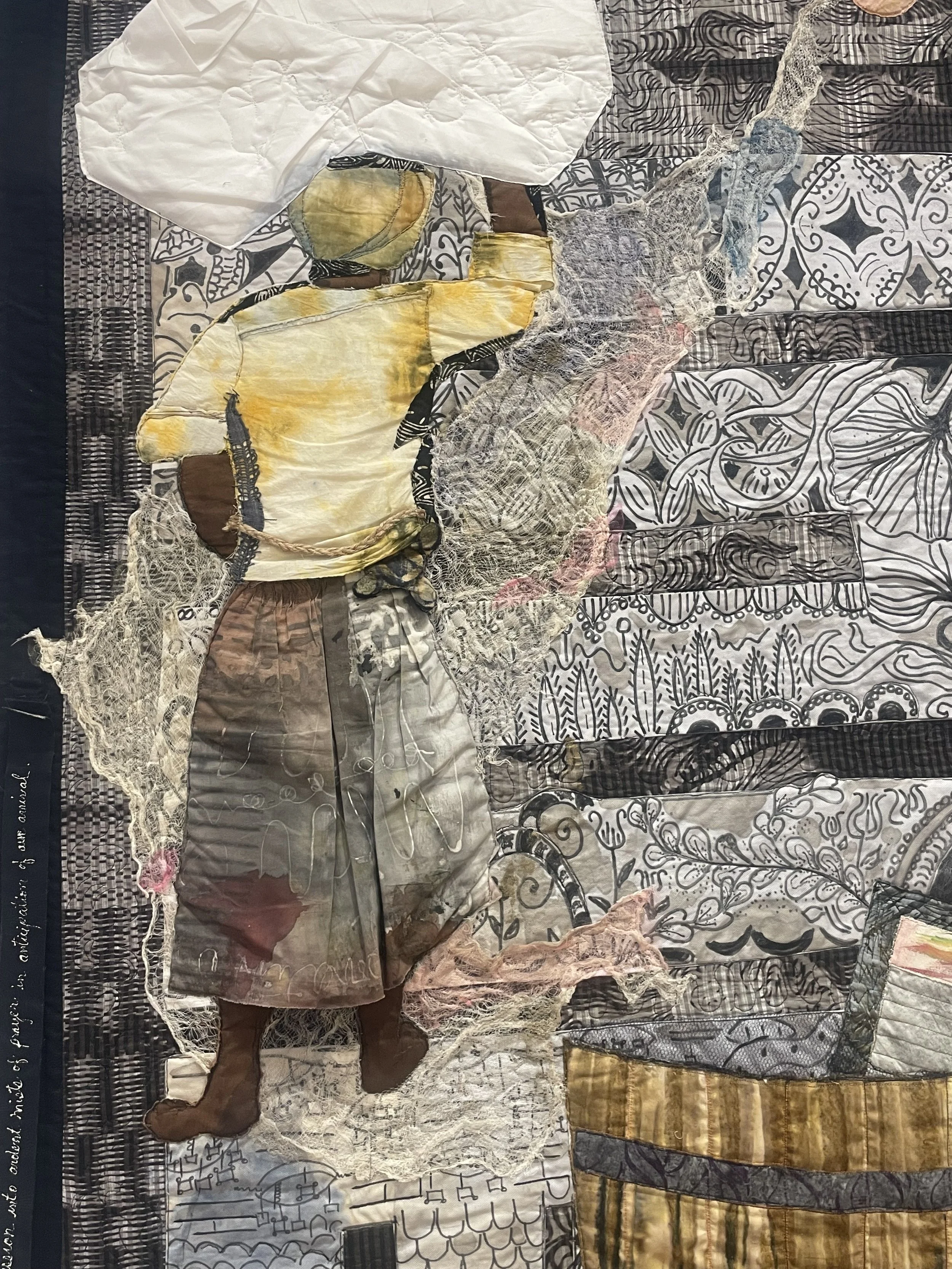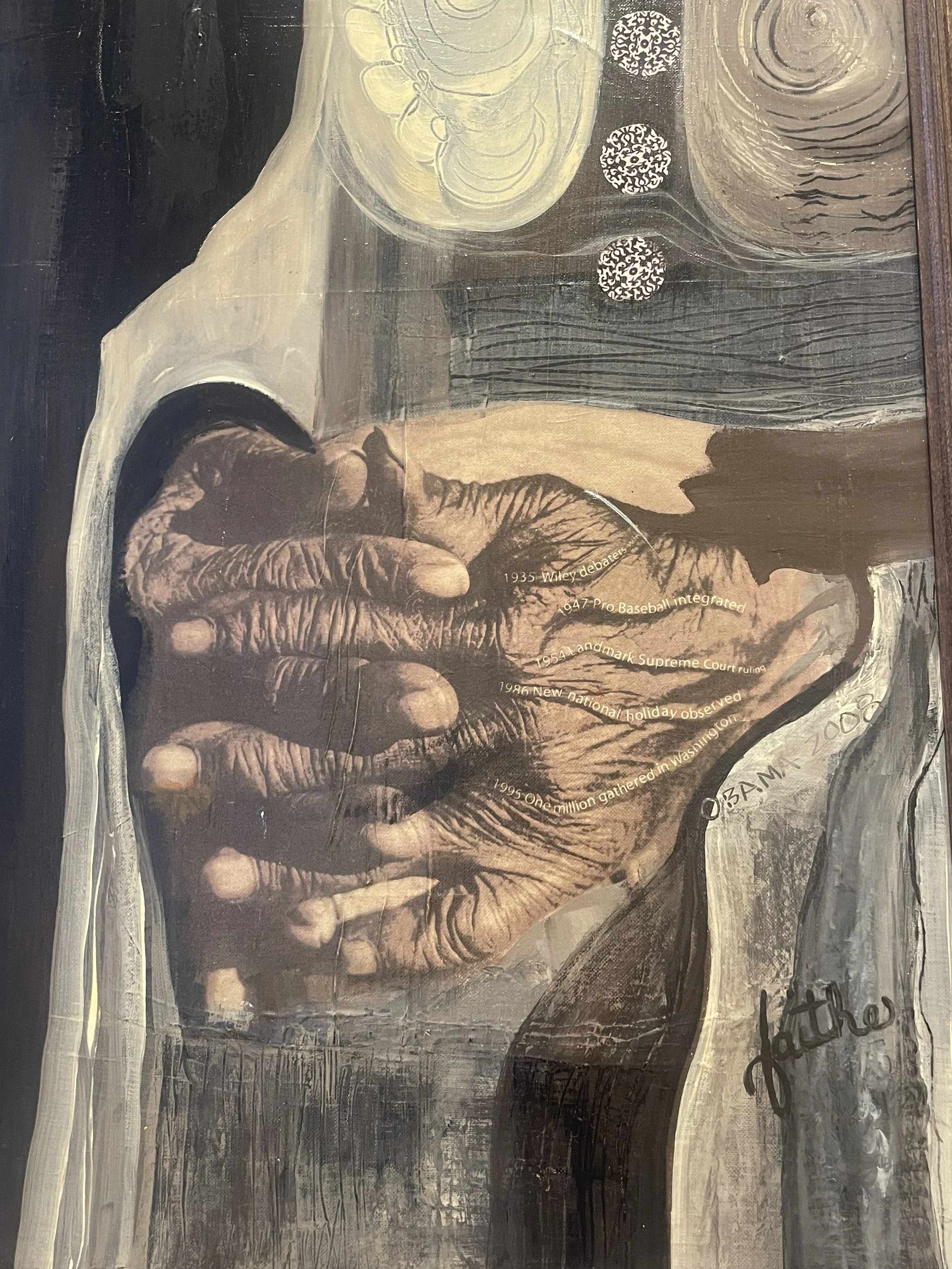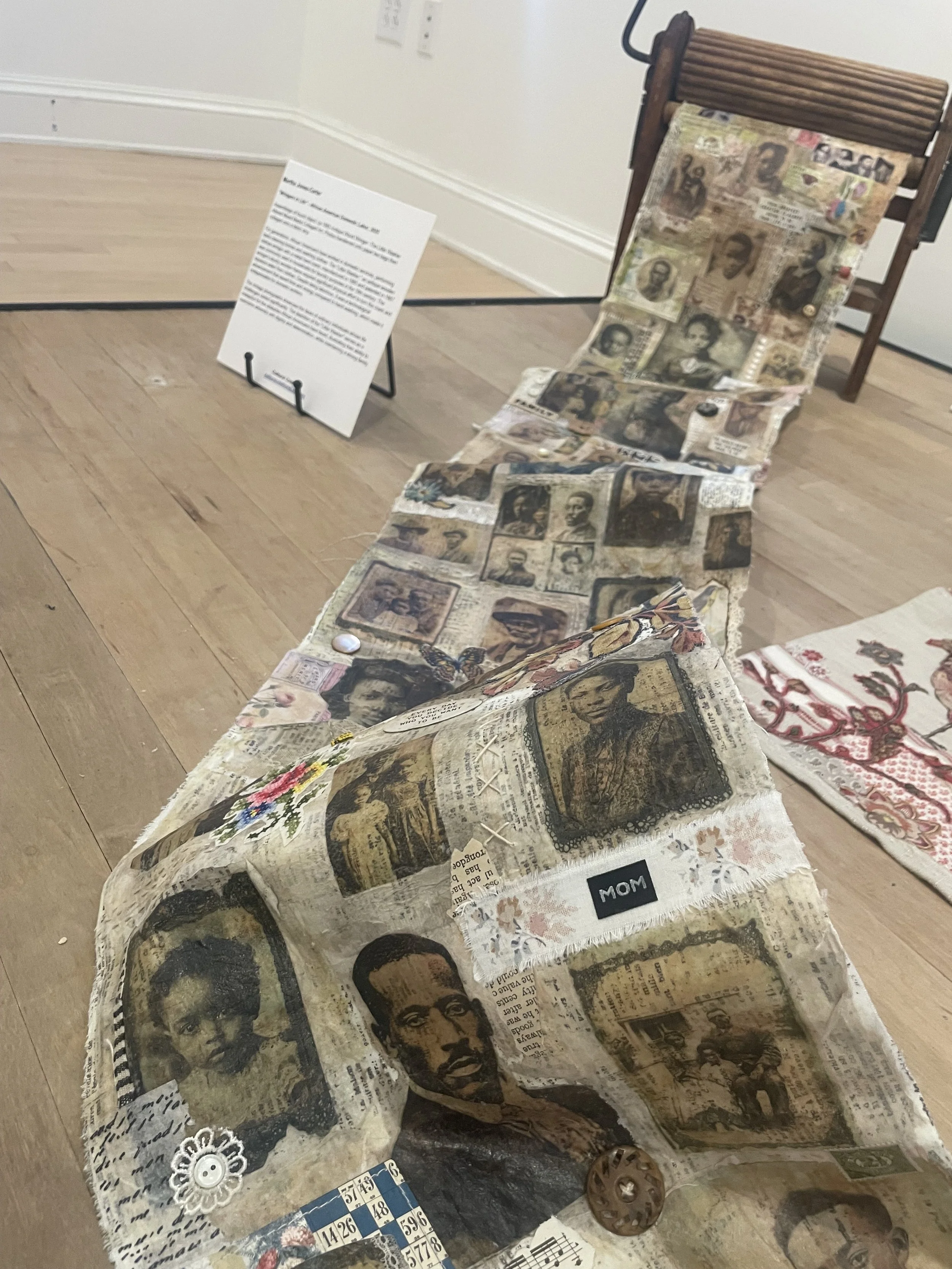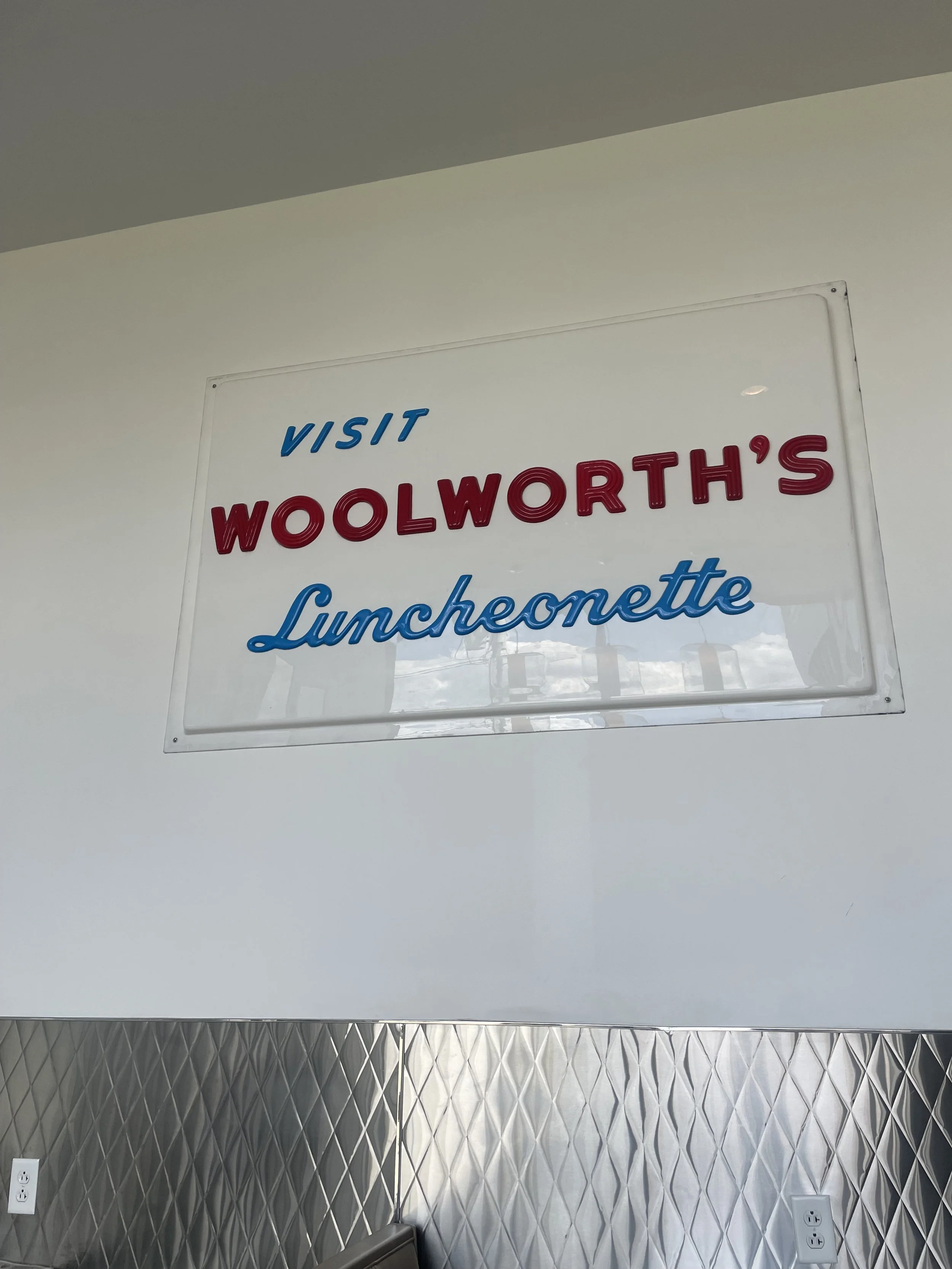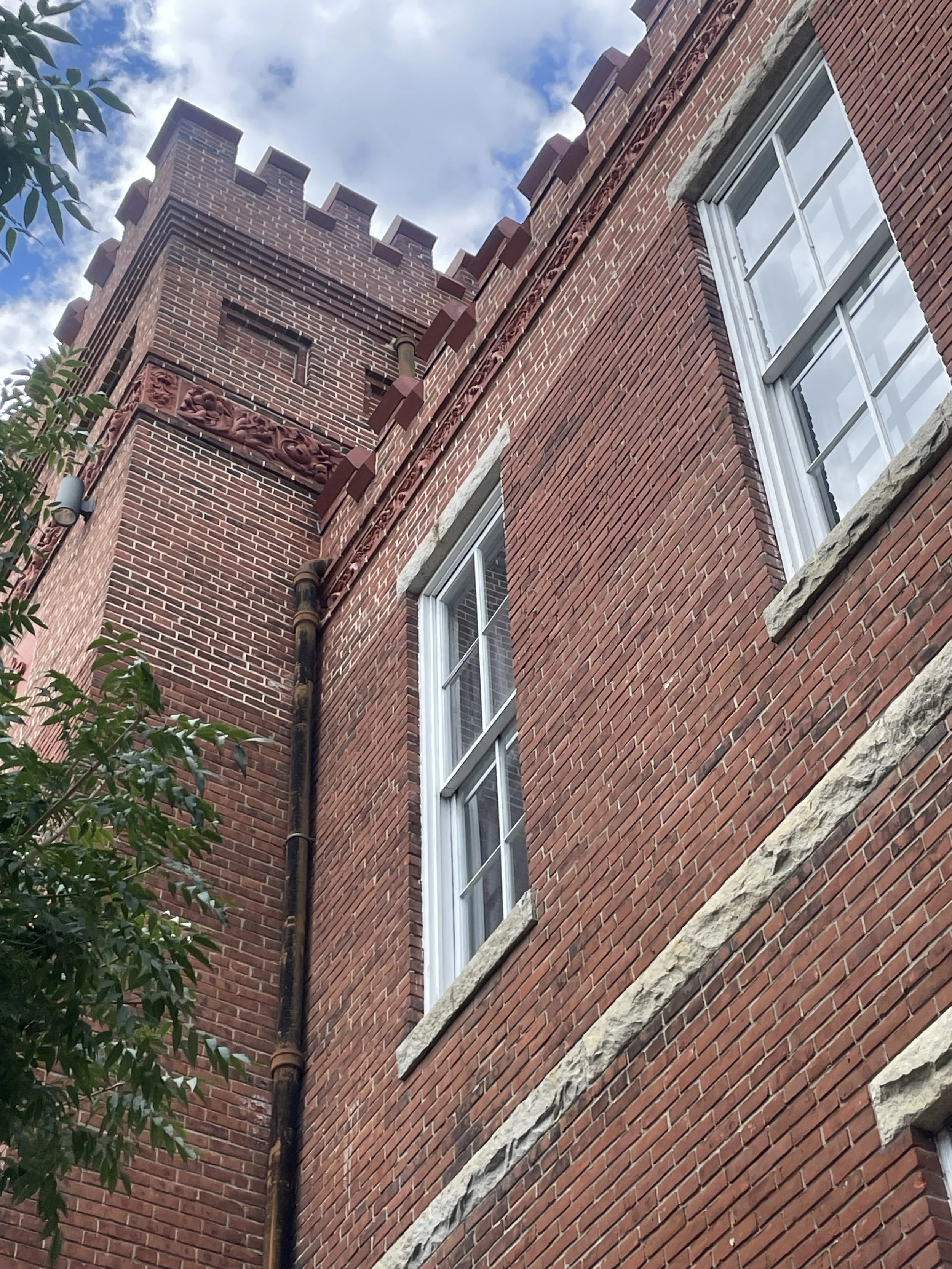The Black History Museum
Within the historically black neighborhood of Jackson Ward sits what looks like an old Federal castle, complete with turrets and terracotta reliefs. Beyond being the present-day home of the Black History Museum and Cultural Center of Virginia, this 1832 building has a long history with Richmond’s black community.
Maggie Walker and the Council of Colored Women bought the building in 1922, and in 1932, it became the black branch of the Richmond Public Library. It’s only fitting that a museum dedicated to black history would find its home here.
It was on a sleepy Wednesday afternoon that I decided to check this place out. Admission is just $10, and there are two floors (there’s an elevator, making it accessible). The first floor was dedicated to history, while upstairs was more of an art gallery. I started downstairs, where there was an exhibit called Hymns to Hip-Hop: The Unsung Harmony of the Black Music Experience. On one side of the room, art reflecting the rich history of black music hung on the wall. On the other side, exhibits explaining that history, starting from the traditional music of West Africa and ending with modern-day hip-hop. Each section highlighted black Virginians who impacted music, like Ella Fitzgerald and Pharrell Williams.
The main exhibit of the museum is a long hall with an interactive timeline detailing the rich and lengthy tapestry of black history. It starts all the way in Ancient Egypt, runs through the years of chattel slavery, the Civil War, Reconstruction, Jim Crow, and the Civil Rights Movement. It’s extremely detailed, and I recommend taking the time to click through and read every stop on the timeline. Side rooms delve deeper into these different time periods, highlighting the individuals who fought for their rights and dignity.
Heading upstairs, you’ll find tapestries made by school children based on different African traditions. Then, you get to the art gallery, full of art by black artists based on the black experience. I wandered around, reading all the little descriptions, when the museum’s security guard — an older gentleman named Hamlin walked over to me.
“Do you get this?” he asked me as I peered at a small sculpture of a man tied to a basketball hoop. I could feel my face flush as I scanned my brain for something intelligent to say, but before I could answer he shook his head and said, “I don’t get it. It’s been here a while, and I still don’t get it.” Disarmed, I relaxed and we started to talk about art and pretending to understand art. He told me he loved classical music, because listening to it made him think of old Looney Toons episodes with Bugs Bunny and Elmer Fudd.
I told him my favorite piece in the room was a work called Grandmother’s Hands, a mixed media artwork of elderly hands with the words of important moments in black history traced on each vein. Hamlin then told me that Bill Wither’s daughter recently came to the gallery and loved the work so much she wanted to take it home. That marked the end of my visited to the Black History Museum and Cultural Center of Virginia.
When I got downstairs, the lady at the front desk told me to tell people about them, let people know they were there. I told her I was planning to write about it for my blog. Her eyes brightened and she asked if I had many subscribers to which I simply chuckled and said, “No.” ˗ˏˋ ★ ˎˊ˗
